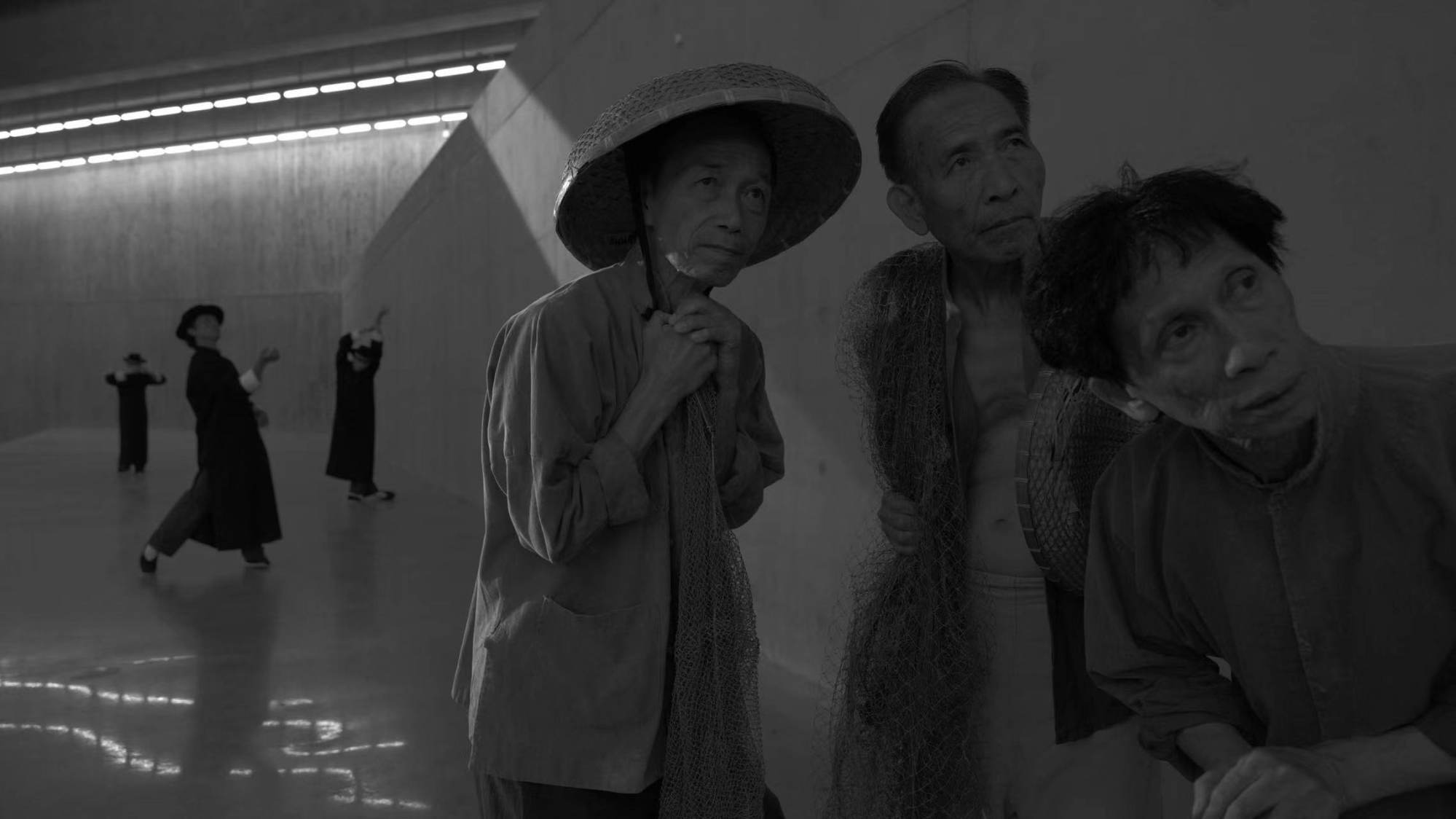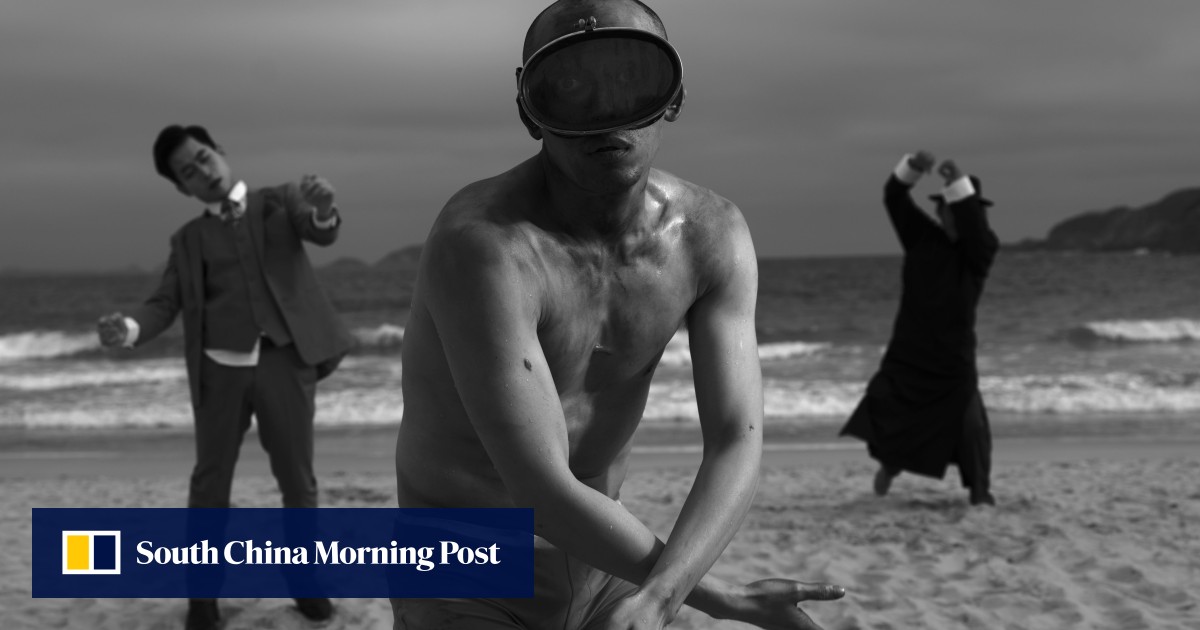That makes perfect sense for Yang – after all, he is known around the world for his evocative and dreamlike films that transcend time and space.

Born in 1971 in Beijing, the artist didn’t grow up making films; rather, he dedicated his teenage years to painting. He went on to attend the China Academy of Art, in Hangzhou, Zhejiang province, and graduated with a bachelor of fine arts in oil painting, but it was while studying there that he gradually became drawn to other creative forms – including film and video.
“After graduating university, I floated around for about three years, but every day I thought about filmmaking,” he says.
Glenn Ligon, black artist inspired by James Baldwin, on his Hong Kong show
Glenn Ligon, black artist inspired by James Baldwin, on his Hong Kong show
Though he was trained as a professional painter, and earned a living from it, he found himself grasping at every opportunity to learn more about filmmaking. For about a month, he dropped in on classes at film school; at other times, he helped out at film shoots.
“Since I thought about it every day, I thought I might as well actually do it,” he says.
He worked hard to find funding, and eventually began shooting his first black-and-white film, An Estranged Paradise, in 1997 (he finished it in 2002).

Hailed as a poignant psychological drama, the film centres on a young intellectual in Hangzhou navigating a palpable sense of displacement.
Since then, Yang has become known for a range of films, photographs, paintings and installations that weave together a multitude of identities, memories and life experiences.
His five-part film Seven Intellectuals in a Bamboo Forest, for one, tackled the dissonance between the real and the ideal. Shot between 2003 and 2007, during which the artist completed one part per year, the film debuted at the Venice Biennale in 2007.
The hour-long Sparrow on the Sea is a continuation of Yang’s exploration of his favoured themes, in particular, the notion of time.
“I’m getting older myself, so perhaps as a result of personal experience, I’m creating a lot about time, changes in life, how to face the future and what a quality life looks like,” he says.

The film features three local dancers, all portraying the same character – a man named Mr Wu. “There’s old and young versions of Mr Wu,” says Yang. “All three dancers are showing the different emotional states of one person.”
The artist, who began discussing the project with M+ and Art Basel six months ago, spent around two weeks filming Sparrow on the Sea in Hong Kong.
The locations and landscapes featured in the film include mountains, beaches, islands and villages, as well as various bustling city scenes, which collectively opened the artist’s eyes to the city’s dynamism.
“Before, I only quickly stopped by Hong Kong when I participated in exhibitions, for example,” says Yang. “But because I was creating and filming here, it was like I lived here for a period of time. My impression is that Hong Kong is much bigger than I thought.
“It’s very three-dimensional, very diverse – there’s everything here. For example, you have very new, modern architecture, but you also have old buildings and structures.
“You have mountains, you have the sea. And there are a lot of people who are living different lives, and people from different countries … It’s very abundant.”

There are two versions of the film: one with sound and one without. The first will be screened at M+ Cinema. The latter will be displayed on the M+ Facade, where the sounds of the environment will act as the ever-changing soundscape.
“What I think is meaningful is that the two versions are the same – I’m not going to change the film,” says Yang. “The length is the same, the content is the same. But when the film is shown in the evening, all of the sounds in the Hong Kong environment – for example, the sounds of the sea, air, architecture and voices – can be understood as this silent film’s sounds and music.
“The sounds will always change,” he adds. “So every person will take away something different from it, whether they watch one minute or 10 minutes, or even if they watched the whole hour while chatting to someone. The sounds they hear and the sounds in the environment will interact with the film.”
Given where it was filmed and where it will be shown, it’s apt that the film’s name, Sparrow on the Sea, pays homage to Hong Kong. The Eurasian tree sparrow is one of the most common resident bird species in the city, which itself is surrounded by the sea.
A lot of Hong Kong films are very refined – they can have this profound effect on you
Yang Fudong
But the film’s name isn’t just literal, Yang notes. “A sparrow on the sea represents an individual – your life, as you grow up, is like that of a bird’s. You have to slowly grow and go out and fly. [And] if you’re around 50 years old, you have to decide whether to fly out or stay where you are.”
Those who watch the film might also notice references to classic Hong Kong films of the 1990s.
“The film features a man who wears a long robe, and this might be inspired by my having watched a lot of Hong Kong films,” Yang says, adding that such movies include Wong Kar-wai’s Days of Being Wild (1990) and In the Mood for Love (2000), as well as A Chinese Odyssey (1995), starring Stephen Chow Sing-chi.
The film is set in Jiangnan, but the lead actress, Wei Wei, moved to Hong Kong and lived in the city until her death, in 2023, at the age of 101.
“[My film], on some level, is to wish Wei Wei well – I hope that in another world, she will be just as happy, and will be able to watch and create great films.”

Yang has gravitated towards black-and-white films because “on another level of understanding, black and white can actually consist of colour,” he says.
“For example, with the seven-coloured spinning top – which we used to play with as kids – once you spin it, all seven colours will be gone. It’ll change into this grey appearance, this singular colour.
“Black-and-white films have this sense of time and distance, so a lot of people will think of nostalgia. But I actually think, as the work’s creator, what’s more meaningful is emotion – there’s this invisible emotion.
“This emotion doesn’t only consist of nostalgia, it’s also intertwined with … happy, sad and other various moods. It’s all in there.”
Visually and tonally, Sparrow on the Sea is similar to Yang’s previous films, although it reflects his current state of mind and perception of time, he says.

In a way, it also represents a nod to his earliest film – a return to a time when his love for filmmaking was pure and uncompromised.
“I’ll chat with friends who are also around 50, and we’ll say that we want to go back to the state of mind we had when we were getting into university and painting,” he says. “Because at the time, painting was really simple – we didn’t think of becoming artists or earning money.
“At the time, we only cared about making art. It was very pure. So during that time, we were really happy every day, just painting, drinking and chatting together.
“Sometimes, whether creating or doing something else, you might have to return to the starting point. As long as you really like it, then do it, whether you’re old or not. If you like it, then be persistent and go back to your starting point …
“In making this film, it felt a bit like returning to that – I was thinking about when I shot my first film, in 1997, and that state of mind.”
Hong Kong is very fast-paced … [but] I think there can also be slower films shot here, ones that can be quietly appreciated by audiences
Yang Fudong
When they were released, several of Yang’s films were viewed by audiences as an exploration of the nuanced feelings of those born after the Cultural Revolution. But Yang insists that political commentary was not his intention – a point that also applies to Sparrow on the Sea.
“A lot of people will routinely ask if my works have any political commentary, but actually, to put it simply, I don’t really consider these things,” he says. “No matter where you live, each city has its own problems.
“But each artist has their own understanding of life, and they might use that to create, like when painting, for example. I simply think that you need to do what you want to do sincerely, whether it’s painting, filming or making music. That’s what’s most important.”

One thing that is clear is his sincerity in expressing his new-found affection for Hong Kong, and his belief in the city’s ability to serve as a backdrop to future art films.
“Hong Kong is such an abundant place,” says Yang. “Aside from just commercial films, really great art films can be shot in Hong Kong.
“Even though on the surface, Hong Kong is very fast-paced, and the economy developed very quickly, I think there can also be slower films shot here, ones that can be quietly appreciated by audiences.”
Sparrow on the Sea will be shown on the M+ Facade until June 9. There are screenings at the M+ Cinema on March 29 and 30.

